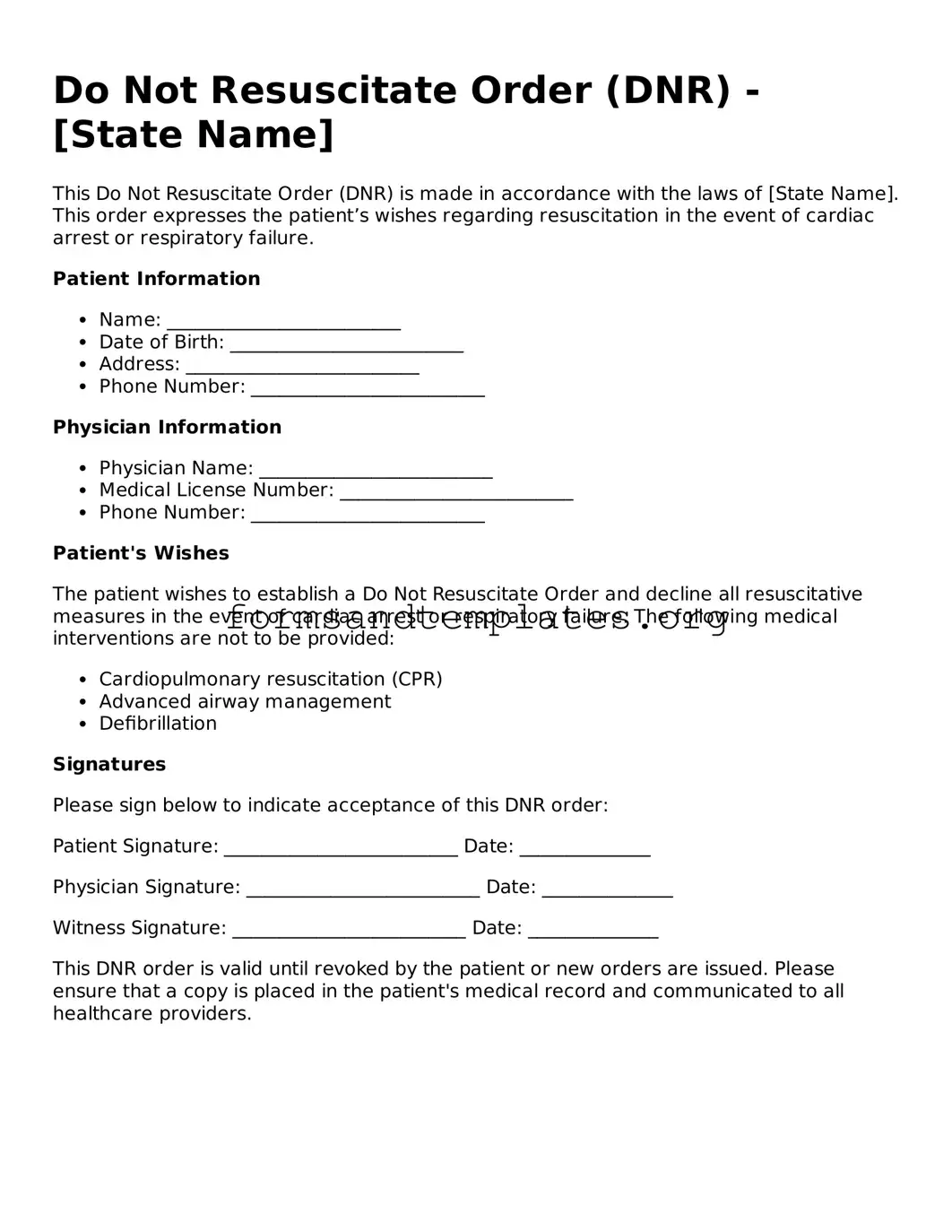Do Not Resuscitate Order (DNR) - [State Name]
This Do Not Resuscitate Order (DNR) is made in accordance with the laws of [State Name]. This order expresses the patient’s wishes regarding resuscitation in the event of cardiac arrest or respiratory failure.
Patient Information
- Name: _________________________
- Date of Birth: _________________________
- Address: _________________________
- Phone Number: _________________________
Physician Information
- Physician Name: _________________________
- Medical License Number: _________________________
- Phone Number: _________________________
Patient's Wishes
The patient wishes to establish a Do Not Resuscitate Order and decline all resuscitative measures in the event of cardiac arrest or respiratory failure. The following medical interventions are not to be provided:
- Cardiopulmonary resuscitation (CPR)
- Advanced airway management
- Defibrillation
Signatures
Please sign below to indicate acceptance of this DNR order:
Patient Signature: _________________________ Date: ______________
Physician Signature: _________________________ Date: ______________
Witness Signature: _________________________ Date: ______________
This DNR order is valid until revoked by the patient or new orders are issued. Please ensure that a copy is placed in the patient's medical record and communicated to all healthcare providers.
